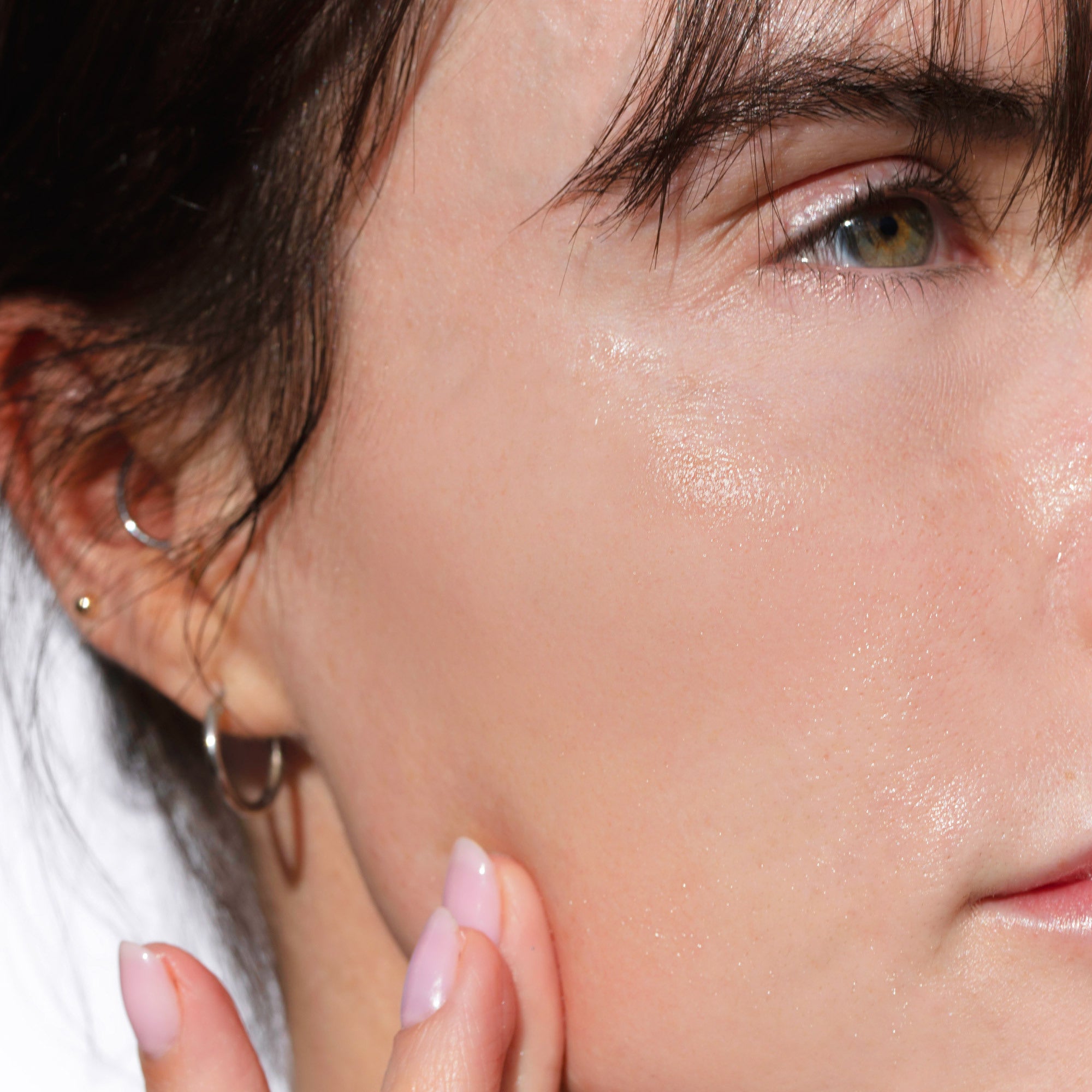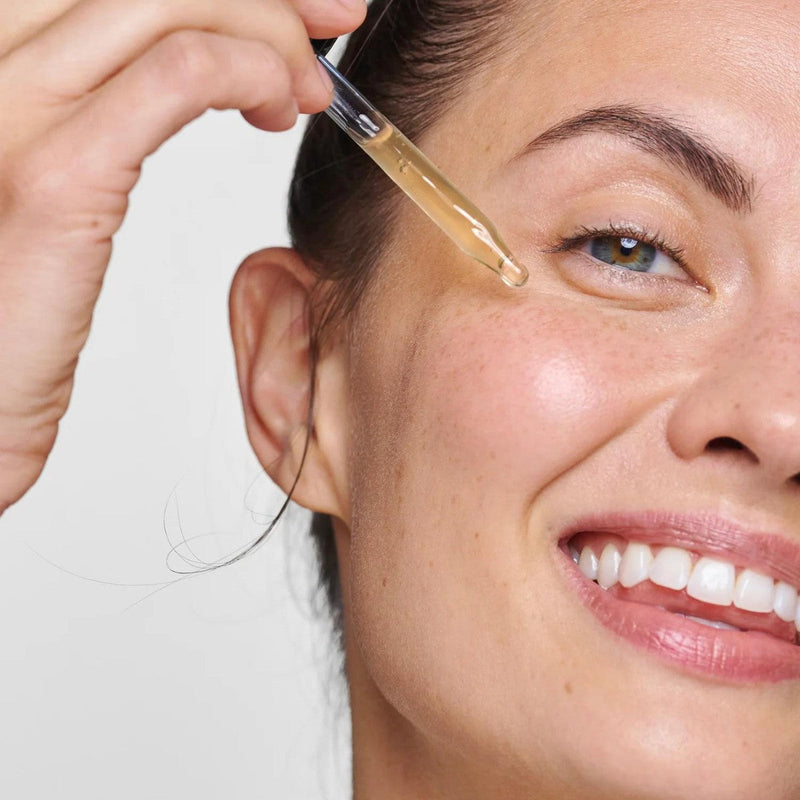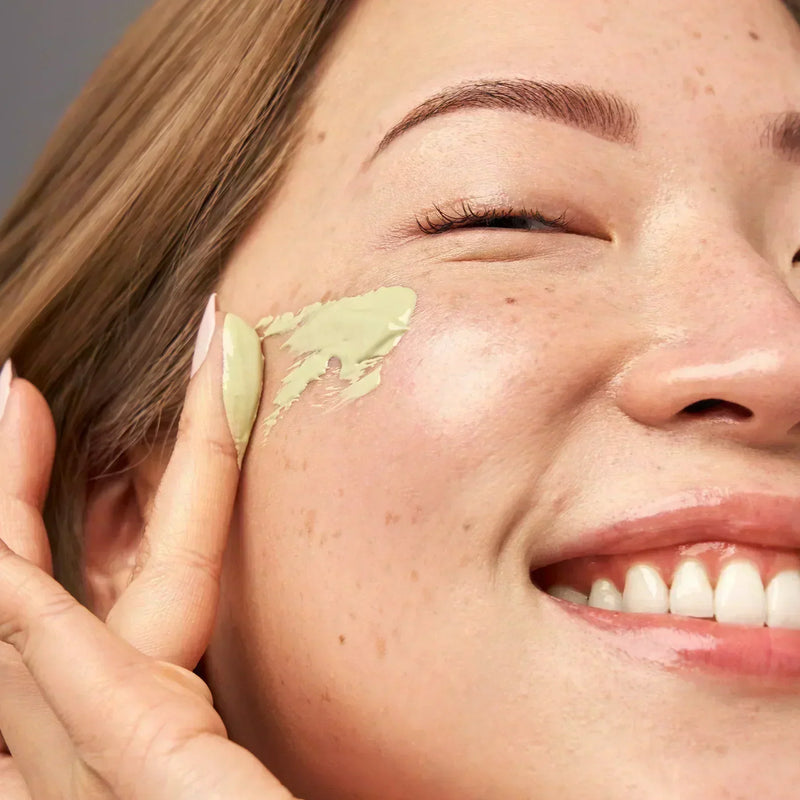Chemical exfoliants slowly and gently resurface the skin by using acids to dissolve dead skin cells. We know ... the words acid and chemical don't exactly scream gentle skincare, but the right chemical exfoliant is actually gentler than a physical exfoliator (most people scrub their skin too vigorously, causing micro-tears, which let in bacteria and increase oil production and, in some cases, exacerbate dermatitis and acne.) Regular chemical exfoliating unclogs pores, enhances skin texture, evens skin tone, boosts cell turnover, improves circulation, stimulates collagen production, and allows for better product absorption - providing deeper hydration to the skin. Is it time for a light resurfacing?
Exfoliation, Explained: The Path to Clearer Skin
Before diving into which exfoliation method is best, it’s helpful to understand how each one works and what makes them uniquely suited for different skin types and goals.
Chemical Exfoliation vs. Physical Exfoliation
Physical exfoliants include anything from a washcloth to a scrub containing abrasive particles that physically slough off dead cells, while chemical exfoliation works through a chemical reaction that dissolves dead skin cells. You know the Glass Skin Korean complexion trend we're all chasing? Well, the leave-on chemical exfoliant is an essential step in the K Beauty 10-step skincare routine to achieve a super dewy, smooth, hydrated look. Chemical exfoliants come in various concentrations and use different types of acids. While physical exfoliation has been a popular choice, chemical exfoliation is earning top marks from skincare professionals for its effectiveness and ability to transform the skin's texture and appearance without causing damage to the skin surface and disrupting the skin barrier. It is particularly beneficial for those with sensitive or acne-prone skin.
The Different Types Of Chemical Exfoliants
There are two primary types of chemical exfoliants: alpha-hydroxy acids (AHAs) and beta-hydroxy acids (BHAs). AHAs, including glycolic acid and lactic acid, are water-soluble and work on the surface level of the skin, making them ideal for dry or sun-damaged skin. BHAs, such as salicylic acid, are oil-soluble, penetrating deeper to unclog pores, hence being suitable for oily and acne-prone skin. When you apply a chemical exfoliant to the skin, these acids dissolve the 'glue' that holds dead skin cells together, allowing them to be easily sloughed off. This process stimulates the production of new skin cells, collagen, and elastin, which help improve the skin's texture and tone.
The Best Acids For Gentle Chemical Exfoliation
Glycolic Acid: This AHA is known for improving skin texture, reducing the appearance of fine lines, and enhancing radiance. It suits most skin types except for rosacea-prone skin. Glycolic Acid was initially developed to treat a dehydrated skin condition called ichthyosis.
Lactic Acid: A mild AHA, lactic acid exfoliates, hydrates, and brightens the skin. It's best for dark spots, surface wrinkles, and fine lines and is suitable for sensitive and dry skin types.
Salicylic Acid: A BHA with oil-soluble properties, salicylic acid is highly effective in unclogging pores, combating acne, and reducing inflammation. It is ideal for oily, acne-prone, and combination skin (which is why acne patches containing salicylic acid are the gold standard).
How To Use A Chemical Exfoliant
After cleansing your face, apply the chemical exfoliant evenly on your skin. That's it! No need to rinse off. (Slight tingling or redness is normal.) Because chemical exfoliants increase product absorption, now is a great time to apply your natural facial serum to add hydration to deeper levels of the epidermis. Exfoliants have the potential to leave skin feeling dry, so follow up with your natural facial moisturizer and - and this is an absolute must - a hearty layer of natural, broad-spectrum UVA & UVB mineral sunscreen. AHAs and BHAs make skin more sensitive to the sun, so they're best applied at night - but you still need SPF during the day! A chemical exfoliant can be used 2-3 times a week.
5 Groundbreaking Chemical Exfoliants
1. Josh Rosebrook Daily Acid Toner: This unique acid complex from Josh Rosebrook is formulated with micronutrient-rich, fresh-made plant extracts and hyaluronic acid in a base of aloe juice. It works at different speeds and depths, delivering a light resurfacing action designed to work with the skin's natural exfoliation rhythm and how it sheds on its own. It's exfoliation, elevated. Just grab your reusable organic cotton rounds, press and apply.
2. Fitglow Beauty Clear + Bright Mandelic Drops: This powerful yet gentle solution is for skin that struggles with uneven tone, dullness, or clogged pores. Formulated with 5% Mandelic Acid, this dermatologist-tested serum is uniquely safe for sensitive and even rosacea-prone skin types. Unlike conventional AHAs, it pairs its resurfacing power with soothing plant extracts like Bearberry and Western Field Dock to help fade hyperpigmentation, sun spots, and past skin damage. The result? A clarified, balanced, radiant complexion you’ll love, morning or night.
3. Glow Jar Beauty 7% AHA Exfoliant Gel: This 7% AHA exfoliating gel from Glow Jar Beauty is a gentle, leave-on, PM serum that helps to even skin tone, brighten the complexion, increase firmness, and reduce acne scarring. High on the ingredient list, Glycolic Acid and Lactic Acid are the glassy skin power couple. It's the best exfoliator for sensitive skin.
4. Fitglow Beauty Plant Active Peel Pads: If pre-soaked exfoliant pads are your jam, the gentle exfoliating peel pads from Fitglow Beauty are packed with potent plant ingredients like birch extract, licorice, and mandelic acid to unclog pores, brighten the skin, and improve skin texture with a single swipe across the skin. Bonus - they're fully biodegradable.
5. Josh Rosebrook Body Acid Serum: When the rest of your body feels left out, try this body serum treatment from Josh Rosebrook. Formulated for the thicker skin from the neck down, this AHA body serum is a silky blend of potent acids that remove dead cell buildup, smoothes skin texture, and promote even skin tone.
Skin Care Bonus Tips for Chemical Exfoliation
Patch Test: Before using a new chemical exfoliant, perform a patch test on a small area of skin to check for any adverse reactions.
Start Slowly: It's important to note that while chemical exfoliation brings significant benefits, over-exfoliation can harm your skin barrier. Begin with a lower concentration and gradually increase the frequency to allow your skin time to adjust. While 2-3 times a week works for most, how often you should exfoliate depends on your skin type. (Don't know your skin type? We're here to help!)
Listen to Your Skin: Skin is an excellent communicator. Pay attention to how your skin responds to chemical exfoliation. If you experience excessive dryness, redness, or irritation, take a week or two off and quench your skin with a non-irritating moisturizer or oil.
Follow Instructions: Always read and follow the instructions provided by the product manufacturer. Different formulations may have varying application methods and recommended usage frequencies.
Our Takeaway: Chemical Exfoliation Is a Must in Your Natural Skincare Routine
Chemical exfoliation, when used correctly, is a game-changer in your natural skincare lineup, revealing brighter, smoother, clearer skin. Be mindful of your skin type, choose the right products, and remember—less is more! If you have questions about incorporating chemical exfoliation into your natural skincare routine, contact your knowledgeable Green Kiss Educator today. Happy exfoliating!
All copy found on The Green Kiss website is written for informational purposes only and is not a substitute for professional medical advice.






